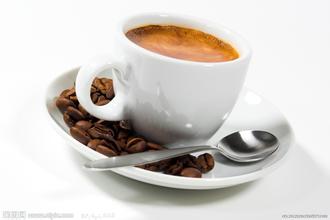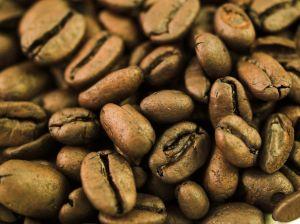The production of Espresso is a technical work, a grinding technology.
Espresso production: grinding

The thickness of the coffee beans depends on how they are cooked. Generally speaking, the longer the cooking time, the coarser the ground powder. In terms of actual cooking, American filtered coffee takes a long time to make, so the coffee particles are the coarsest, the "siphon" method takes about a minute to cook coffee, and the coffee particles are medium;Espresso takes the shortest time, so the particles that need to be ground are also the finest. The "grinding technocrats" believe that grinding coffee powder of the right thickness is essential for perfect coffee. There is a theoretical ideal time for extraction of water-soluble substances in coffee powder: if the powder is very fine and brewed too long, it will cause excessive extraction, and the coffee may be very bitter and lose its aroma; on the other hand, if the powder is too coarse, it will brew too fast, resulting in insufficient extraction, and the coffee will be tasteless. The particle size can be discussed, the shape of the blade used for grinding can also be selected from flat and conical shapes, and one technical point about grinding is recognized: grinding must be done before brewing. After coffee beans are ground into powder, due to increased surface area, moisture is easily absorbed and oxidized, resulting in impaired flavor. Some of the "grinding technology pie" provides a maximum holding time of 30 minutes.
After grinding the coffee powder, it seems that a cup of technical Espresso can finally be made according to the technical standards set out by Andre Illy in his book Espresso Coffee: The Chemistry of Quality. Indeed, Andrea Illy belongs to the famous Illy coffee family. This family invented the first automatic espresso machine that replaced steam with compressed air in 1933, becoming the prototype of the modern automatic Espresso machine, and the technical innovation of this family also accounts for three of the eight historical breakthroughs in the coffee industry. So, no matter which technical school you measure from, the standard from the Illy family has become a classic description of some kind of Espresso: "Take 7 grams of freshly ground coffee, use water at a temperature of about 91 degrees Celsius, and extract for about 25 seconds to get a cup of coffee beverage of about 30 milliliters. The surface of this cup of coffee should be covered with a layer of reddish-brown foam (Crema)."
Andre-illy is also very modest to admit: this standard is only based on his own experience, how to extract a perfect cup of Espresso, technical discussion has just begun, such as the United States senior barista David-Schomer (David Schomer) think: the best Espresso needs 8.2 atmospheres of pressure and 95℃ brewing temperature. The question that should accompany grinding is, how much ground coffee do you put in the filter basket? How to apply powder and press powder? But another technical question tends to cross the line: where should the filter handle be placed at leisure?
Asia, represented by Taiwan, believes that because the aroma components in coffee powder are mostly volatile, if the filter handle is preheated in advance, a large amount of aromatic substances will be lost during compression, which is very harmful to Espresso. A common view in Europe and America is that the filter must be placed on the brewing head (group) when it is not used, so that it can be preheated and reduce the impact of temperature difference. Schommel, in his book Espresso Coffee: Professional Techniques, states that "the water from the boiler of a coffee machine can already be maintained at ±1 ° C, but it is another matter to maintain the temperature of the brewing head stable. The machines I have tried have at least 6℃ variation. The structure of the filter handle itself bears a bit of responsibility. It itself is made of heavy metal and is designed to keep warm. But metal is easy to dissipate heat. Take the handle off the machine, put in coffee powder and press it. The metal part dissipates a lot of heat throughout the process and ends up 20 ° C cooler than originally expected." For optimal temperature control, most commercial Espresso machines for coffee shops use brass brewing heads and stainless steel filters, but this "luxury" is rarely seen on home machines.
Important Notice :
前街咖啡 FrontStreet Coffee has moved to new addredd:
FrontStreet Coffee Address: 315,Donghua East Road,GuangZhou
Tel:020 38364473
- Prev

The production of Espresso is the common sense of technical work.
Production of Espresso: generally speaking, large coffee beans can produce better coffee. In the case that the quality of coffee beans has been fully assured, the first technical problem to be solved is blending. Blending refers to the selection of coffee beans of different origin and quality to achieve the desired results. The matching technocrat believes that 50% of the success factors of a perfect Espresso depend on the composition of the match.
- Next

The production of Espresso is a technical work, the technology of loading powder.
Production of Espresso: where to put the handle of the powder filter is a matter of opinion for the time being, let's see the powder loading. Andre Yili has a short sentence of 7g, but in the eyes of some careful people, this stage can be described as the most difficult step in the Espresso process. The coffee powder compacted in the filter handle is often called the cake, and for Espresso, there are more than one per second.
Related
- Beginners will see the "Coffee pull flower" guide!
- What is the difference between ice blog purified milk and ordinary milk coffee?
- Why is the Philippines the largest producer of crops in Liberia?
- For coffee extraction, should the fine powder be retained?
- How does extracted espresso fill pressed powder? How much strength does it take to press the powder?
- How to make jasmine cold extract coffee? Is the jasmine + latte good?
- Will this little toy really make the coffee taste better? How does Lily Drip affect coffee extraction?
- Will the action of slapping the filter cup also affect coffee extraction?
- What's the difference between powder-to-water ratio and powder-to-liquid ratio?
- What is the Ethiopian local species? What does it have to do with Heirloom native species?

